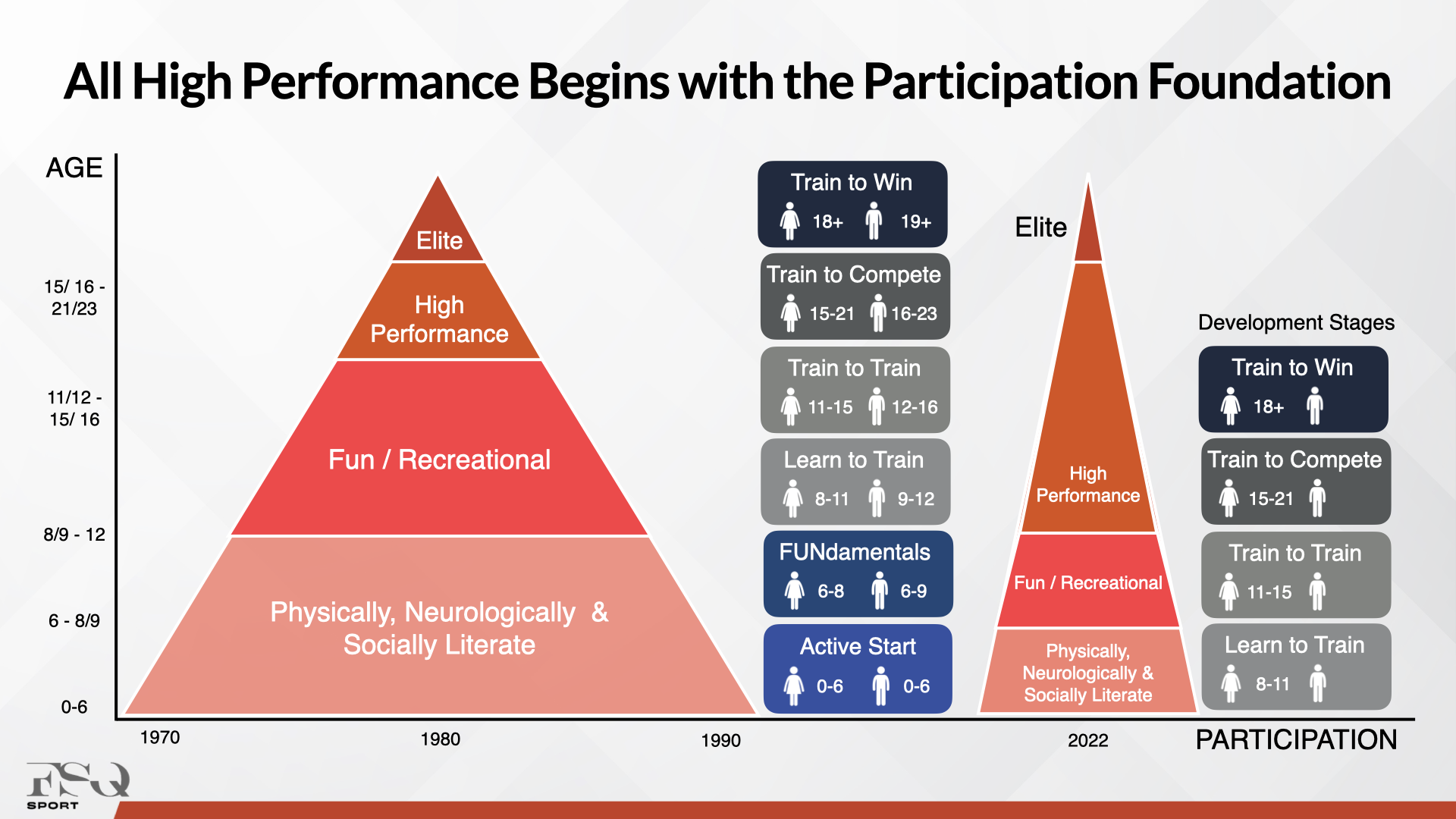Is your House League Program keeping up with stakeholder needs and wants?
Note: House league Programs can also be called Recreational programs, House League, Grassroots, Community, etc.
At its core, recreational programs are a sport organization’s lowest level of community programming. Typically, they service age groups starting U2 (toddler) and can go up to U18+ (adult). Recreational programs are the lifeblood of an organization’s “Sport for Life” stage and are the foundation of the development pyramid player pool.

A player’s first experience with an organization generally comes from their initial registration within the lowest level of play. It can also be the first touchpoint a stakeholder has with your organization.
These programs are the well-oiled machines that flow seamlessly through your annual season cycle. Open registration, build teams, gather staff/volunteers, hand out uniforms, start season, photo day, hand out medals…..wash, rinse, repeat. But how often do we pause to reflect on how the well-oiled machine is keeping up with today’s stakeholder wants and needs?
So often recreational programming is the program that gets minimal attention in comparison to its big brothers – the competitive & high-performance programs. However, it is the largest player pool, the highest revenue generator, and inhabits the majority of an organization’s retention potential.
Across the industry, there are some exciting new trends in recreational programming. Below are a few that stuck out to FSQ Sport for consideration.
1. One Uniform Colour League
In concept, the program eliminates the multi-colour “team” environment. Each participant receives the exact same colour, typically in line with the club brand, and does not have a number on be back. Pinnies are used to divide teams on game night.

- Benefits include easier uniform distribution, the ability to mix players on bad weather/attendance nights, evenings of development levels, and unused uniforms that can be utilized year after year.
- The elimination of multi-colour teams may also contribute to an increase in diversity, inclusion and equity standards across the organization’s strategy.
2. One Night a Week Programming
Is your program running two nights a week? One practice and one game night – considering how busy families are these days, one night a week provides the opportunity to those unable to commit to two nights. What happens to practice/development?

- Try hosting a development night on the alternative night of the recreational game nights as an add-on program. Allowing those interested to opt in and providing your technical team with the ability to organize a dedicated group of coaches.
- Providing better quality, club-directed, development sessions.
- Designated development creates an equal opportunity to equal development opportunities for all.
- Eliminating the “volunteer who knows the most about soccer runs the best practices in the league” scenario.
- Subsequently, development nights are a great way to connect with those recreational families who may be interested in making the jump to the next level on the player pyramid.
3. Non-Sport Community-Minded Enhancements
It has been proven that engagement goes up when registrants feel a strong sense of value for their dollar. Outside of the program’s basic foundation, the sport itself, what else does the program offer to add value?

- Think about adding non-sport community-minded enhancements. Connect with local businesses to do sampling nights or provide additional swag, have the local police/fire/EMS service attend, get a sponsor to hire a face painter or balloon maker, discounts on municipal programs in partnership with the city……the possibilities are endless!
- Host a “Bring-a-Friend” night. What a great way to increase stakeholder engagement and showcase your program to new members of the community. Go one step further and offer the families, and the friends they bring, a discount on next season.
There are a few different ways to test new programming opportunities with stakeholders. Pilot a test season, select a test field, or observe an indoor season before launching outdoors. To understand the success of your programs, conduct stakeholder surveys pre, mid, and post season to evaluate how things are going and the opportunities to improve. Environmental scans provide valuable data to share with the community regarding the rationale of enhancements to programming.
Changes made as a result of sound testing and evaluations are more likely to succeed. Alternatively, launching program changes without proper review can lead to miscommunication, confusion and pushback from stakeholders.
With the above in mind, embrace the opportunity to think outside the box. Challenge traditional thinking and encourage leadership to consider new ways of doing things. Test new ideas. Evaluate results. Launch with thought and care!
We’re here to help as many as possible, as long as possible, in the best environment possible. If you would like to discuss ideas on how to create a stronger culture in your club/community, develop a programming model to ensure financial stability and align your team on shared goals, we look forward to connecting with you.

